Subaru Forester
The RHD Subaru Forester has long been a desirable postal delivery vehicle for rural letter carriers, but they’ve been very hard to find. Our team was even once involved in converting them to RHD. But now we can get you factory RHD Foresters so if you want to know more, read on.
Jump To Section
Subaru Forester Introduction
The first-generation Subaru Forester, launched in Japan in 1997, was developed in response to the growing popularity of crossover SUVs in the 1990s. The idea was to take the practical aspects of a station wagon and combine them with the off-road capabilities of an SUV – a vehicle that offered the best of both worlds: the comfort and handling of a passenger car with the ruggedness of an off-road vehicle.
It was built on a development of the Subaru Impreza platform. The Impreza was Subaru’s imperious rally machine which had helped it gain massive credibility for off-road performance with multiple World Rally Championship wins earlier in the ‘90s.
It was first introduced to the public as the Subaru Streega, with a prototype showcased at the 1995 Tokyo Motor Show. The Streega was based on the Subaru Impreza platform and featured a powerful 2.0-liter turbocharged engine. It was marketed as a “multi-sport 4WD,” blending versatility and performance. Fortunately, they decided to change the name!
The engineers were put in charge of the design process, which resulted in the use of Subaru’s Symmetrical All-Wheel Drive system and the horizontally opposed boxer engine. Bringing these together meant that the Forester ended up with a low center of gravity, which was great for its stability and handling. On the other hand, the more traditional station wagon looks and practicality made it attractive for younger families who associated Subaru with the outdoor lifestyle.
The Forester has had a glowing reputation among rural letter carriers, with some of these first generation models even being converted to RHD using parts from Japan. But now it’s possible to get these early models direct from Japan as right-hand drive postal vehicles, so let’s look at them in more detail.
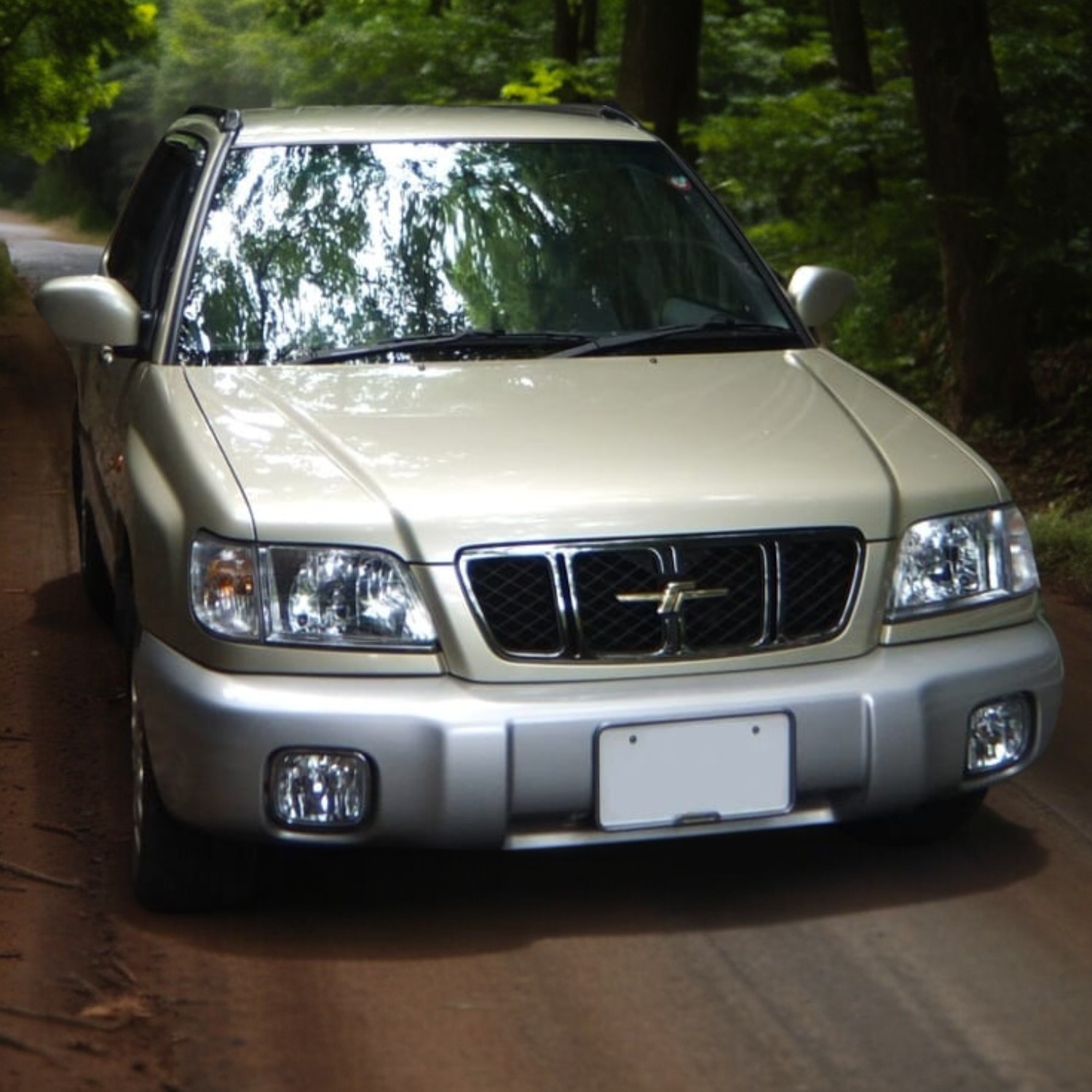
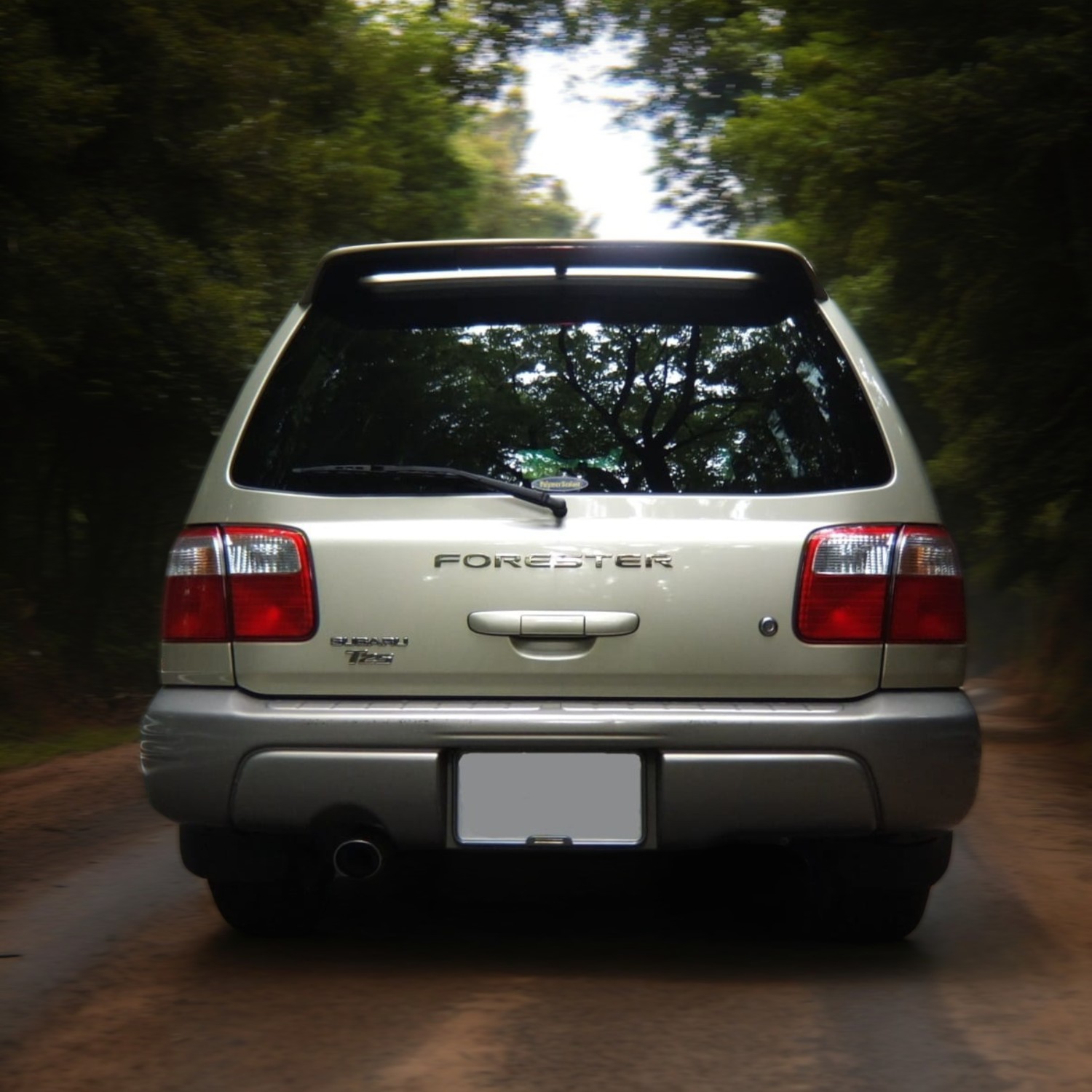
Cargo Capacity
This first-generation Subaru Forester’s cargo area was designed for practicality and versatility, catering to various hauling needs. The SF5 model provided a cargo capacity of approximately 14.9 cubic feet with the rear seats up, which expanded to around 64.9 cubic feet when the rear seats were folded down. This setup allowed for a flat load floor, with a wide rear opening and low load floor height further enhancing ease of loading and unloading items.
In the SF9 model, the cargo capacity remained largely similar, maintaining around 14.9 cubic feet with the seats up and expanding to approximately 64.9 cubic feet with the seats down. However, the split-folding rear seat design (60/40) offered flexibility in configuring the cargo area to accommodate both passengers and larger loads.
Engines
2.0-Liter Engines
The first-generation SF5 Subaru Forester’s 2.0-liter engine, known as the EJ20, was available in both naturally aspirated (NA) and turbocharged versions. The naturally aspirated EJ20 engine produced about 135 horsepower and 137 lb-ft of torque. Known for its reliability and smooth performance, this version also offered decent fuel economy, achieving approximately 29.6 miles per gallon under Japanese testing conditions.
The turbocharged variant of the EJ20 significantly enhanced the Forester’s performance, delivering up to 250 horsepower and 234 lb-ft of torque. This engine provided robust acceleration and strong performance across various terrains. Despite this added power, the turbocharged EJ20 maintained a reasonable fuel economy, achieving around 24.9 miles per gallon under the same testing conditions.
2.5 -Liter Engines
The first-generation SF9 Subaru Forester featured a 2.5-liter engine, designated as the EJ25. This engine was available in naturally aspirated and turbocharged versions – a step up in power and performance from the 2.0-liter EJ20 engine.
The naturally aspirated EJ25 engine produced around 165 horsepower and 166 lb-ft of torque. It was known for its strong mid-range performance and reliability. And the fuel economy for the naturally aspirated EJ25 was also reasonable, offering around 25 miles per gallon under Japanese testing conditions.
The turbocharged variant of the EJ25 engine delivered significantly more power, producing up to 210 horsepower and 235 lb-ft of torque. Despite the increase in power, the turbocharged EJ25’s fuel economy was still OK, achieving approximately 22 miles per gallon.
Ultimately, which engine is suitable for you will depend on your route. For most postal workers, the 2 liter naturally aspirated one will be fine and help your EMA go as far as possible. But if your route is more mountainous, then you may want to consider the 2.5 liter or 2.0 liter turbo models.
Transmission And 4WD System
First-generation Subaru Foresters sold in Japan offered a 5-speed manual transmission or a 4-speed automatic transmission. So far, so typical of the cars of the time. But the Forester went further to help the driver in difficult conditions, such as ice and snow.
First of all, the manual transmission featured a viscous limited-slip differential (LSD) center differential, providing a fixed torque split of 50:50 for improved traction and stability, particularly in off-road conditions.
In case you’re wondering how and LSD helps, well it’s a type of differential that allows for some degree of torque (essentially, “twisting power”) to be transferred between wheels on the same axle. This mechanism is designed to limit the difference in wheel speed, which can be especially useful in low-traction conditions. When one wheel loses traction, the LSD can transfer more torque to the wheel with better grip, thus improving traction and stability. Think about it like this – the right rear wheel is on nice, grippy tarmac, but the left rear wheel is spinning on slippery ice, so the LSD transfers more to the wheel that has the greater amount of grip. There are many ways this can be done, such as clutch plates, helical gears, or viscous fluids.
So, what about this ‘viscous’ (not ‘vicious’!) limited-slip differential (VLSD) that you find on first generation manual Foresters? Well, this LSD uses a viscous (‘thick’) fluid to control the torque distribution between the wheels. So, what you have inside the VLSD, is a series of perforated plates connected to each axle that are immersed in a silicon-based fluid. When there’s a significant difference in wheel speed, the shear action within the fluid generates resistance, causing the plates to transfer torque from the faster-spinning wheel (the one with less traction) to the slower-spinning wheel (the one with more traction). This process helps to balance the wheel speeds and improve traction, particularly useful in conditions where one wheel may encounter less grip, such as on ice or loose gravel.
You’re probably wondering what makes the viscous limited slip differential (VLSD) you find in the manual Forester better than the other mechanical types. Well, first of all, it offers a smoother and more gradual engagement, making for a more comfortable driving experience.
You see, unlike mechanical LSDs, which use clutch plates or gears that can engage abruptly, the VLSD relies on the shear properties of viscous fluid transfers torque more gradually. So, you have a more seamless transition between ‘locked’ and ‘unlocked’ states. It’s smoother and more comfortable for you as the postal worker driver, and it helps your car handle those difficult winter conditions better as well.
Another plus is that VLSDs generally require less maintenance. The viscous fluid is sealed within the unit, reducing the need for frequent servicing compared to mechanical LSDs, which often require regular maintenance or replacement of worn parts. Definitely a plus when you need your car available for deliveries, and you don’t want to spend your precious EMA on getting it fixed.
So, that’s the 5-speed manual transmission with it’s LSD. But, as a postal worker, you may well prefer the convenience of the automatic. Let’s have a more detailed look at the Subaru Forester SF5 and SF9 model’s automatic transmission.
Well, the automatic transmission used something called the Active Torque Split (ATS) system. It sounds impressive, but what does that actually mean? This ATS mechanism used a multi-plate transfer clutch that was electronically controlled to manage torque distribution between the front and rear wheels. The default torque split was 60% to the front wheels and 40% to the rear, which would give you good stability under regular driving conditions. But, the system was always monitoring those driving conditions and could adjust the torque distribution in real-time, redirecting torque to the wheels with the most grip to improve control on slippery or uneven surfaces. In other words, when things got slippery, it would decide which wheels had more grip, and send more of that ‘twisting power’ (torque) to them. You can see how this would be especially effective in adverse weather conditions, such as rain, snow, or ice.
These transmission options are all part of Subaru’s Symmetrical All-Wheel Drive system. Sounds fancy, doesn’t it? But what about it is ‘symmetrical’, and why should you care?
Well, it’s because it used a symmetrical layout – horizontally opposed “boxer” engine with a symmetrical drivetrain layout – that allowed for even weight distribution along the vehicle’s centerline and created a balanced, low center of gravity. The benefit for you? Greater vehicle stability and better handling.
So, these first generation Subaru Foresters had even weight distribution, a low center of gravity, 4WD, and powertrains that would always send power to the wheels with the most grip. It’s no wonder that SF5 and SF9 Subaru Foresters have such a great reputation with postal workers who deliver in cold climate conditions.
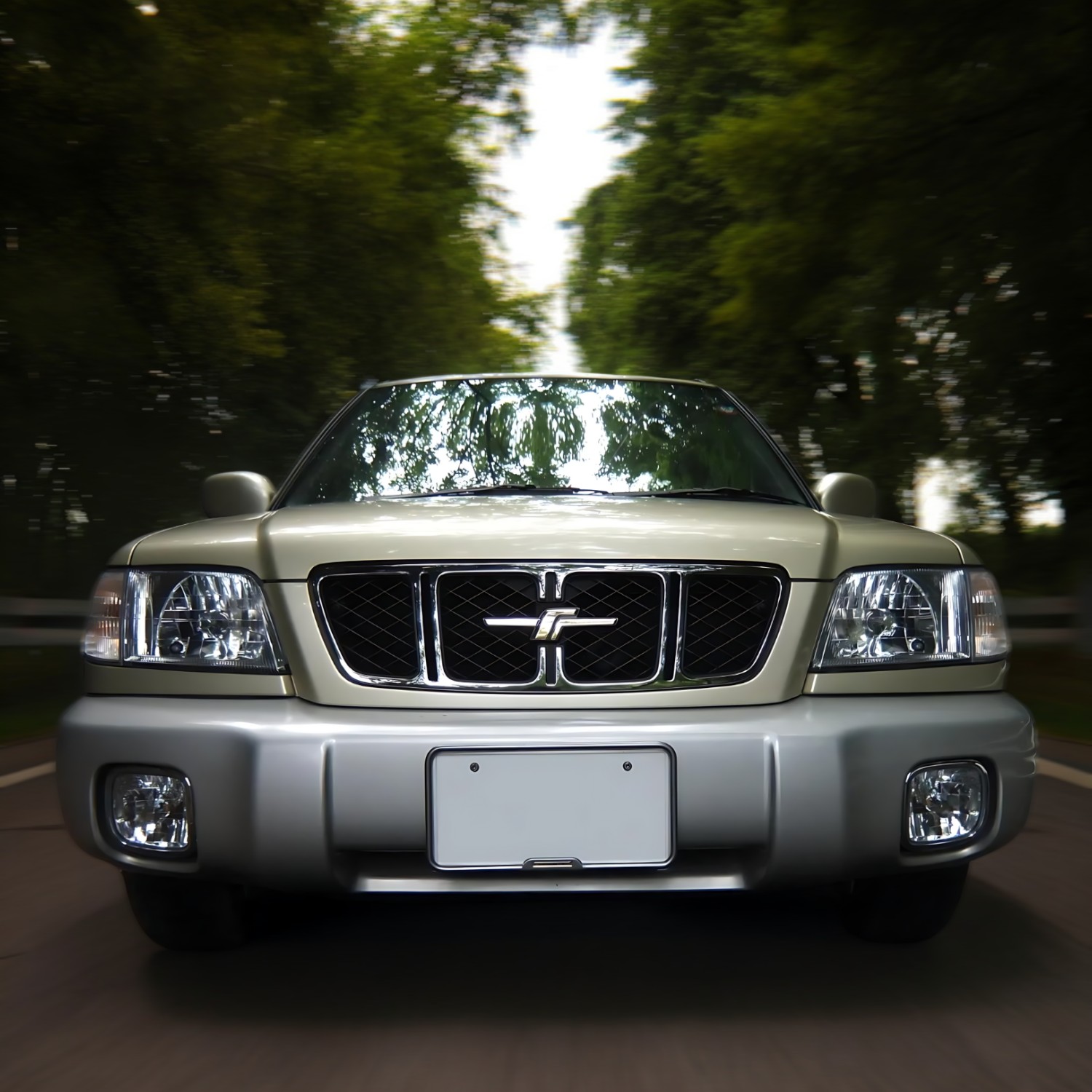
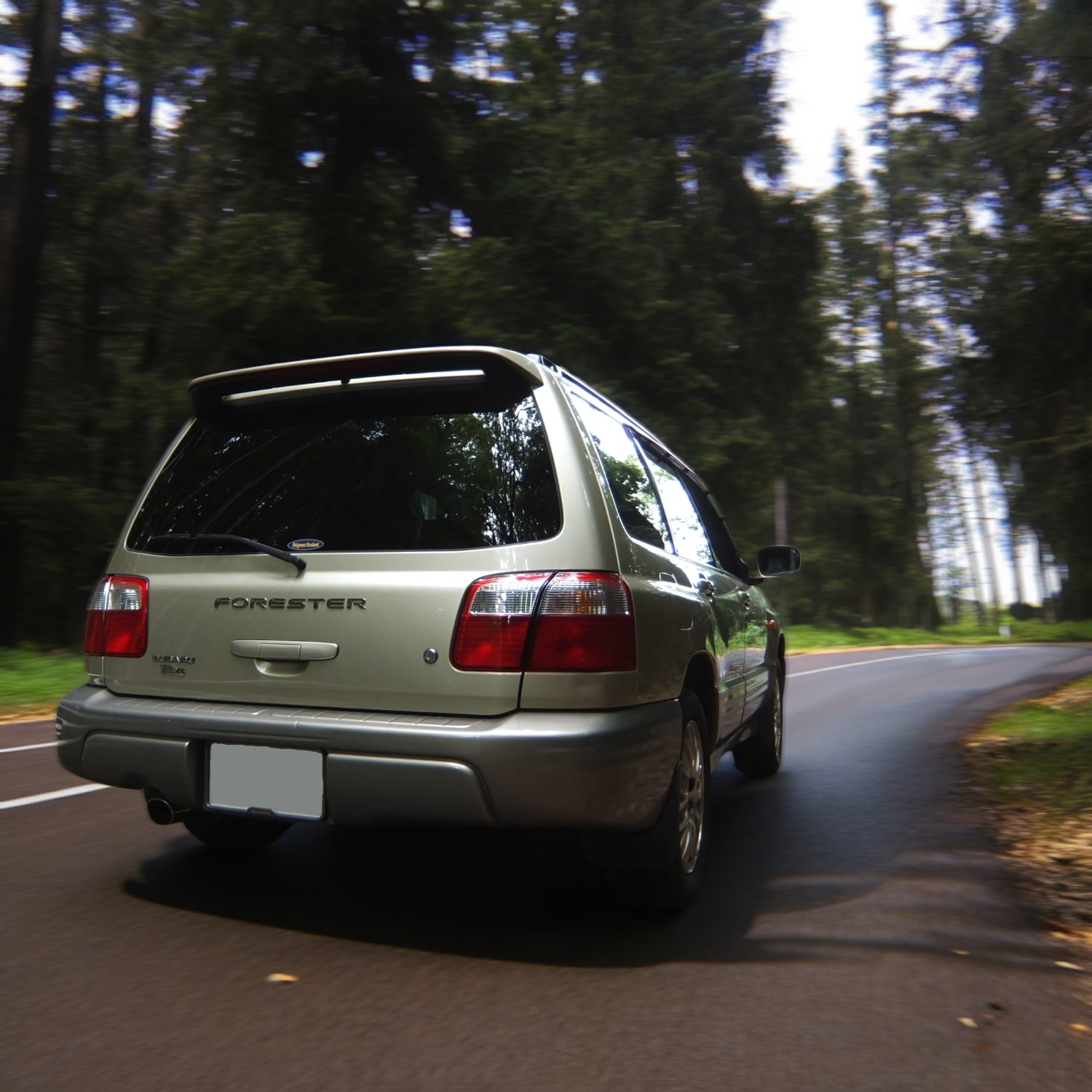
Interior
The SF5 Forester featured a well-thought-out interior layout with ample space for passengers and cargo. The seats were designed for comfort, with good legroom and headroom in both the front and rear. The rear seats could be folded down to expand the cargo area. The materials used in the interior were durable and easy to clean, reflecting the Forester’s utilitarian, rugged nature. The dashboard picked up that them, being straightforward, with easy-to-read gauges and logically placed controls, ensuring a practical, user-friendly experience.
The SF9 Forester retained these practical features of the SF5, but also brought in several enhancements. The interior materials were upgraded for a more refined feel, and additional comfort features were also included. The seats offered better support and were available with optional leather upholstery in some models. The SF9 also introduced more advanced climate control systems and improved sound insulation, making the cabin quieter and more comfortable.
Of course, both models featured practical features like multiple storage compartments and cup holders.
Safety
These first-generation Subaru Forester, both SF5 and SF9, came equipped with several key safety features that were considered advanced at the time. They included – dual front airbags, anti-lock braking systems (ABS), and reinforced body structures designed to absorb forces during collisions. Subaru’s focus on passenger safety was particularly evident in the inclusion of side-impact protection and seatbelt pretensioners.
Reliabilty
Owners of these right-hand-drive Forester models in Japan consistently praised them for their strong build quality and dependable performance over many years of use. If you look at comments on Japanese ratings website, the positive feedback often includes mentions of the Forester’s resilience in difficult weather conditions and its longevity over many miles of driving.
Subaru as a manufacturer consistently performs well in the realm of reliability rankings. For example, Consumer Reports ranks Subaru high among mainstream automotive brands, just behind Toyota and Honda. They praise Subaru for their robust build quality and durability. The Subaru Forester, in particular, is frequently highlighted for its reliability, and is often top recommendation.
Now, it would be best to describe maintenance costs for the RHD SF5 and SF9 Foresters as ‘moderate’ compared to similar vehicles. When we talk about ‘regular maintenance’ that includes oil changes, brake pad replacements, and timing belt changes. According to users on Japanese consumer site Minkara, these tasks are straightforward, and parts are reasonably priced. For example, oil changes and brake pad replacements are relatively inexpensive and you can often just do them yourself.
That said, some specific repairs, such as replacing the timing belt or hub bearings, can be more costly but are infrequent. For example, Subaru recommends the timing belt should be replaced around every 100,000 kilometers (approximately 62,000 miles). But while it is a significant maintenance item, it is crucial for preventing engine damage. Hub bearing replacements are also a noted expense but, once more, only have to be done infrequently.
In fact, user reviews on Japanese consumer websites indicate that, with regular maintenance these Foresters can be trusted to run reliably for many years. The consensus is that the initial higher cost of some maintenance tasks is offset by the vehicle’s overall longevity and the fact that it doesn’t need so many repairs during its lifespan.
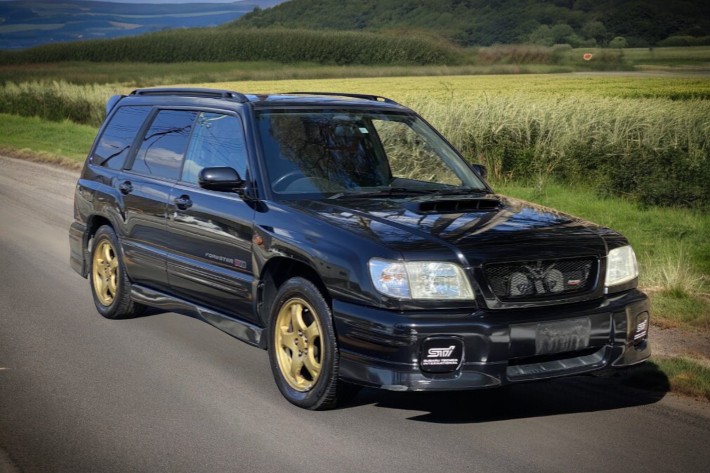

Specifications
Subaru Forester SF5
- Engine: 2.0L (1994cc) EJ20 inline 4-cylinder DOHC
- Naturally Aspirated: 135 hp at 5600 rpm, 137 lb-ft at 4400 rpm
- Turbocharged: 250 hp at 6000 rpm, 239 lb-ft at 4000 rpm
- Transmission: 5-speed manual / 4-speed automatic
- Drive: Full-time 4WD
- Seating: 5 seats
- Fuel Efficiency:
- Naturally Aspirated: Approximately 29.6 mpg
- Turbocharged: Approximately 24.9 mpg
- Dimensions:
- Length: 175.2 inches
- Width: 68.5 inches
- Height: 63.6 inches
- Weight: Around 3197 lbs
- Suspension: MacPherson strut front, double wishbone rear
- Brakes: Front disc brakes, rear drum brakes
- Turning Radius: 17.4 feet
- Fuel Tank Capacity: 15.8 gallons
- Notable Features: Power windows, air conditioning, optional sunroof, multiple storage compartments
Subaru Forester SF9
- Engine: 2.5L (2457cc) EJ25 inline 4-cylinder DOHC
- Naturally Aspirated: 165 hp at 5600 rpm, 166 lb-ft at 4000 rpm
- Turbocharged: 210 hp at 6000 rpm, 235 lb-ft at 4000 rpm
- Transmission: 4-speed automatic
- Drive: Front-wheel drive (FF) / Full-time 4WD
- Seating: 5 seats
- Fuel Efficiency:
- Naturally Aspirated: Approximately 25 mpg
- Turbocharged: Approximately 22 mpg
- Dimensions:
- Length: 175.2 inches
- Width: 68.5 inches
- Height: 63.6 inches
- Weight: Around 3300 lbs
- Suspension: MacPherson strut front, double wishbone rear
- Brakes: Front disc brakes, rear drum brakes
- Turning Radius: 17.4 feet
- Fuel Tank Capacity: 15.8 gallons
Summary
So, there you have it: The right-hand drive SF5 and SF9 Subaru Foresters – tough, 4WD station wagons that have decent fuel economy, sensible amounts of cargo space, a car-like driving experience, and good reliability. Perfect for your postal route!

